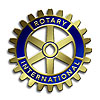
Peripheral neuropathy, a condition characterized by damage to the peripheral nerves, affects millions worldwide, causing symptoms ranging from tingling and numbness to severe pain and muscle weakness. While traditional treatments like medication and physical therapy are commonly employed, emerging therapies such as shockwave therapy have garnered attention for their potential in managing this challenging condition.
Understanding Peripheral Neuropathy:
Before delving into shockwave therapy, it’s crucial to grasp the nature of peripheral neuropathy. Peripheral nerves transmit information between the central nervous system (the brain and spinal cord) and the rest of the body. Damage to these nerves interrupts this communication, leading to a myriad of symptoms depending on the nerves affected and the extent of the damage.
Peripheral neuropathy can stem from various causes, including diabetes, infections, traumatic injuries, autoimmune diseases, and exposure to toxins. Managing peripheral neuropathy involves addressing the underlying cause, relieving symptoms, and preventing further nerve damage.
The Emergence of Shockwave Therapy:
Shockwave therapy, initially developed to disintegrate kidney stones, has evolved into a versatile treatment modality for various musculoskeletal conditions, including tendonitis, plantar fasciitis, and now, peripheral neuropathy.
Shockwave therapy utilizes acoustic waves to stimulate the body’s natural healing processes. These waves deliver mechanical energy to targeted tissues, initiating a cascade of biological responses that promote tissue regeneration, increased blood flow, and pain reduction. While the exact mechanisms underlying its efficacy in treating peripheral neuropathy are still being elucidated, several theories have emerged.
How Shockwave Therapy Helps Peripheral Neuropathy:
- Neovascularization: One proposed mechanism is the promotion of neovascularization, the formation of new blood vessels. By enhancing blood flow to the affected nerves, shockwave therapy may improve oxygen and nutrient delivery, facilitating nerve repair and regeneration.
- Anti-Inflammatory Effects: Peripheral neuropathy often involves inflammation of the affected nerves. Shockwave therapy has demonstrated anti-inflammatory effects, reducing inflammation and alleviating associated symptoms such as pain and swelling.
- Nerve Regeneration: Studies suggest that shockwave therapy may stimulate nerve regeneration by promoting the release of growth factors and enhancing cellular metabolism in nerve tissues. This regeneration could lead to improved nerve function and symptom relief.
- Pain Modulation: Pain management is a primary concern for individuals with peripheral neuropathy. Shockwave therapy has analgesic properties, possibly by desensitizing pain receptors and altering pain signaling pathways in the nervous system.
Conclusion:
Peripheral neuropathy can significantly impact quality of life, and effective treatment options are essential for managing its symptoms and preventing complications. Shockwave therapy represents a promising addition to the therapeutic arsenal for peripheral neuropathy, offering a non-invasive, drug-free approach to symptom relief and nerve regeneration.
As research into shockwave therapy continues to evolve, its role in managing peripheral neuropathy may become more defined, potentially offering new hope for individuals living with this challenging condition. However, comprehensive care for peripheral neuropathy often requires a multidisciplinary approach, integrating various modalities tailored to the individual patient’s needs.






